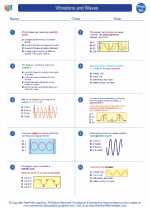Motility in Physics
Motility in physics refers to the ability of an object to move or be moved. It is an important concept in understanding the behavior of various physical systems and is a key factor in the study of mechanics and dynamics. Motility can be described and analyzed using principles of kinematics, dynamics, and energy.
Kinematics and Motility
Kinematics is the branch of physics that describes the motion of objects without consideration of the forces causing the motion. It involves the concepts of position, displacement, velocity, and acceleration. When studying motility, kinematic quantities such as speed, velocity, and acceleration play a crucial role in understanding how objects move and change their position over time.
Dynamics and Motility
Dynamics deals with the forces and torques that cause motion in objects. According to Newton's laws of motion, the motion of an object is determined by the net force acting on it. Understanding the relationship between forces and motion is essential in analyzing motility, as it helps in predicting and explaining the behavior of moving objects.
Energy and Motility
The concept of energy is also closely related to motility. Kinetic energy, which depends on an object's velocity, is a crucial factor in determining the motility of an object. Additionally, potential energy can influence an object's motion by affecting the forces acting on it. Understanding the interplay between energy and motion is important in the study of motility.
Study Guide for Motility
- Understand the basic kinematic quantities: position, displacement, speed, velocity, and acceleration.
- Familiarize yourself with Newton's laws of motion and the concept of force.
- Learn about different types of forces such as friction, tension, and gravitational force, and how they affect motility.
- Study the relationship between work, energy, and motion, including kinetic and potential energy.
- Practice solving problems involving motion, forces, and energy to gain a deeper understanding of motility.
By mastering the concepts of kinematics, dynamics, and energy, and their relationship to motility, you will be able to analyze and predict the motion of objects in various physical scenarios.
[Motility] Related Worksheets and Study Guides:
.◂Physics Worksheets and Study Guides High School. Vibrations and Waves

 Worksheet/Answer key
Worksheet/Answer key
 Worksheet/Answer key
Worksheet/Answer key
 Worksheet/Answer key
Worksheet/Answer key
